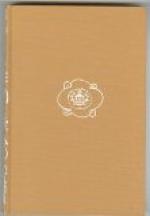|
This section contains 346 words (approx. 2 pages at 300 words per page) |
Encyclopedia of World Biography on Ennin
Ennin (794-864) was a Japanese monk who founded the Sammon branch of the Tendai sect. He studied Esoteric Buddhism in T'ang China.
The family name of Ennin was Mibu, and he was born in the Tsuga district of Shimotsuke Province (modern Tochigi Prefecture). Becoming a disciple of Saicho, the founder of the Tendai sect in Japan, Ennin led a rather colorless life as a monk and teacher at the Enryakuji (another name for this temple was Sammon). He was sent to China for study in 838. His Nyuto Gubo Junreiki (Record of the Pilgrimage to China in Search of the Holy Law) is full of fascinating details of his adventures, from the time he sailed from Japan until his return in 847.
At first unable to obtain the necessary Chinese authorization to visit either of China's two most important Buddhist centers on Mt. Wu-t'ai and Mt. T'ien-t'ai, Ennin later managed to secure the help of an influential general to reach Mt. Wu-t'ai and other holy sites. Ennin returned to Japan after extensive study with the masters of each of the Tendai disciplines.
Upon his return to Mt. Hiei, the Emperor conferred upon Ennin the rank of daihosshi (great monk). Ennin then organized study of the two Mandalas, initiated Esoteric baptism, and promoted other branches of Esoteric learning. He taught the invocation of Buddha's name (nembutsu), which he had heard on Mt. Wu-t'ai and which was to become in some of the popular sects an all-sufficient means of gaining salvation, though for Ennin it appeared to be of less importance than Esoteric learning.
Ennin stayed on Mt. Hiei as zasu (chief abbot) for more than 20 years, and during his ministry he founded the monastery called Onjoji (more usually known as Miidera) at the foot of Mt. Hiei on the shore of Lake Biwa. A measure of Ennin's success is the fact that the bestowal by the court in 866 of the posthumous title of Jikaku Daishi on him and that of Dengyo Daishi on his master Saicho marks the beginning of the custom of posthumous titles in Japan.
|
This section contains 346 words (approx. 2 pages at 300 words per page) |


